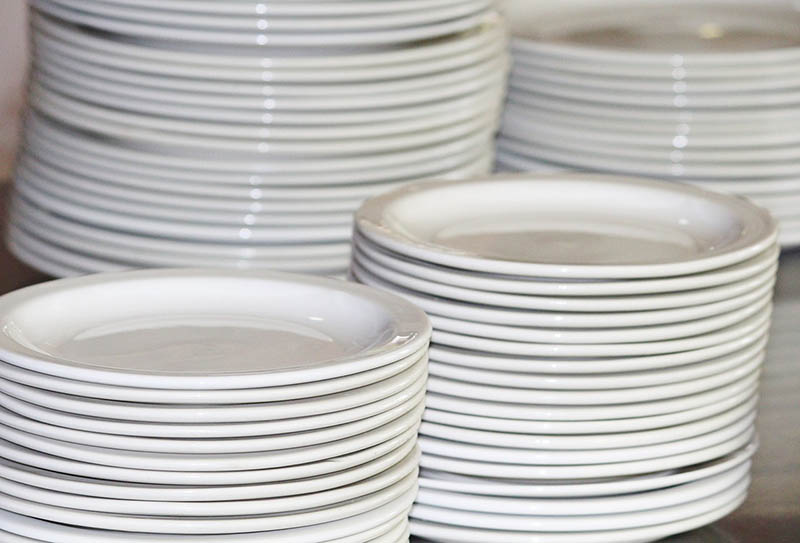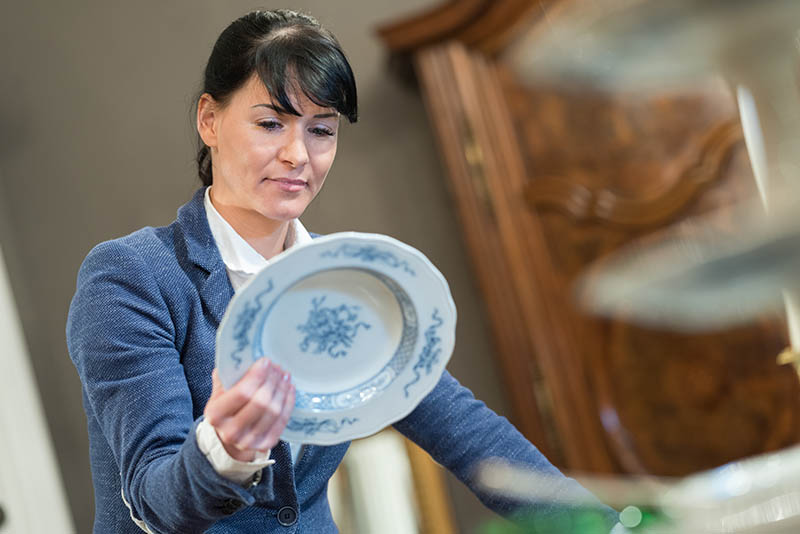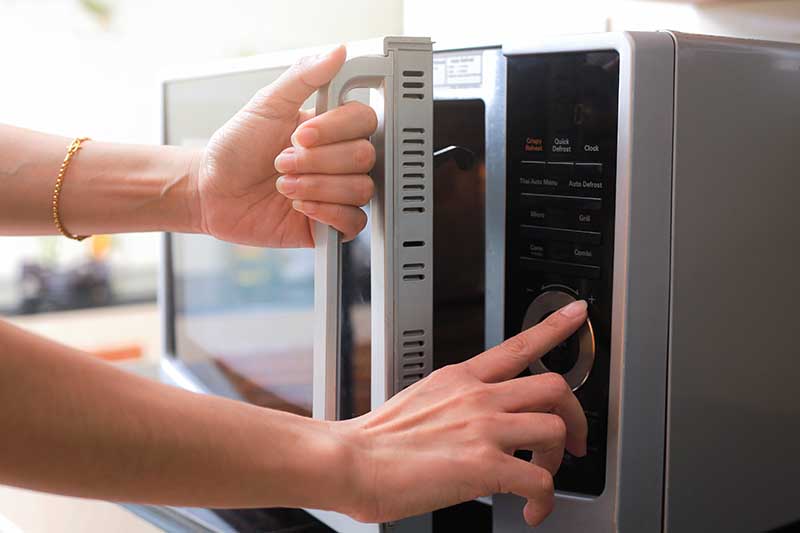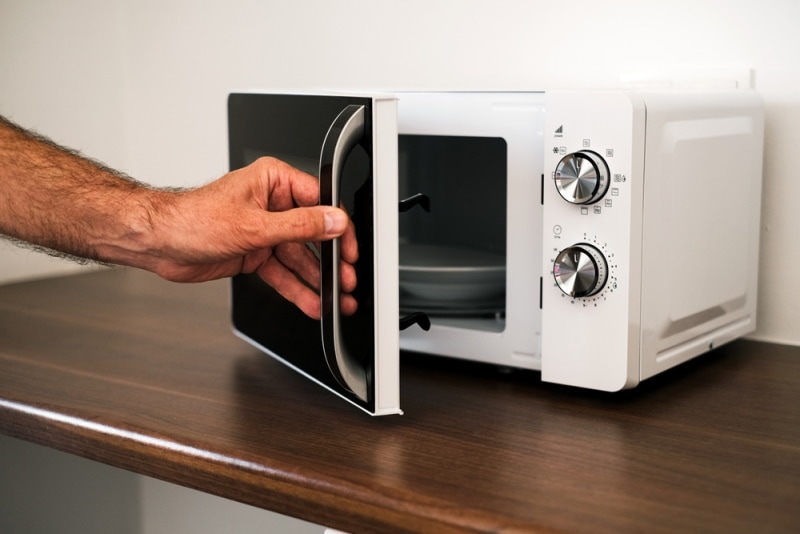Is Porcelain Microwave Safe? (Microwave Safety Tips)
-
Pete Ortiz
- Last updated:

Over the years, homes have heavily adopted microwaves in warming, grilling, and baking foods in everyday food preparation. But even though these kitchen appliances are a lifesaver, you need reliable, reusable, safe, and affordable dishes for warming food.
This is why experts recommend using porcelain and ceramic materials for the job. But it’s often hard to ascertain whether using porcelain in their microwaves is safe. Simply put, Yes, porcelain is safe for the microwave.
In this article, we’ll look at this question and give you microwave safety tips when warming meals with porcelain materials.
Topics covered in this article:
- What Is Porcelain?
- Is Porcelain Material Safe for the Microwave?
- How Do You Microwave Porcelain?
- What are Examples of Non-Microwave and Microwave-Safe Materials?
- How to Use Your Microwave Safely
What Is Porcelain?
Porcelain is a ceramic product made from a combination of natural materials such as clay, sand, feldspar, and kaolin. It’s a subset ceramic where the clays that make porcelain have higher density and are fired up to 2,300 degrees Fahrenheit to give it a surface that’s durable and water resistant.
It’s used to make kitchenware, electric insulators, dental crowns, and more. Porcelain materials also come in varieties of glazed and unglazed variants, depending on the type of use.

Is Porcelain Material Safe for the Microwave?
Yes, porcelain material is safe for the microwave.
The raw materials used in its production make porcelain durable and non-porous; hence products made out of this material won’t absorb food flavors and odors. This makes porcelain dishes safe for human use after being heated in the microwave, so you will not have to worry about your health.
You should, however, note that when microwaving your food with porcelain materials, you should avoid materials with metallic, paint, gold, or trim finishing. This is to avoid melting paint or gold when exposed to heat, thus contaminating food. Metallic coatings, on the other hand, aren’t microwave-safe as they reflect the incoming rays, damaging the microwave.
Always select porcelain dishes labeled “microwave safe,” as they will have undergone tests to prevent catching fire, overheating, and releasing chemicals into your food.
How Do You Microwave Porcelain?
Characterized by a durable, smooth white surface, porcelain can be delicate. This is why you need to exercise care when microwaving it to prevent severe damage. You can follow these tips for safely microwaving porcelain:
1. Physically Inspect the Porcelain Dish

Cross-check any signs of metallic coating or paint decorations before microwaving it. If there are any, do not microwave them. Keep in mind that microwave heat melts the paint on the porcelain, contaminating the food, while metallic coatings reflect the rays and could arc and spark, causing a fire.
2. Avoid Microwaving Cracked Porcelain
Ensure your porcelain dish isn’t cracked or has any traces of chips before microwaving it. These imperfections can worsen when exposed to heat due to sudden temperature changes they’re exposed to.
3. Progressively Increase Microwaving Time

If you are warming up food in new porcelain dishes, start with a short time, such as 30 seconds. If everything works out fine, you can progressively increase heating time in the subsequent phases of your reheating periods. Once you’re confident that the porcelain is fine, heat foods for an extended time frame without worries.
4. Handle Porcelain with Care
Porcelain is a good conductor of heat. When not handled with care, it can burn you leading to the sudden dropping of the porcelain dishes. Use potholders or oven mitts to lift the dishes when removing them from the oven.
What Are Examples of Non-Microwave and Microwave-Safe Materials?
Selecting what goes into heating your food in the microwave should be your primary concern to avoid accidents. Below are some of the recommended materials you can use, but they should not have any coatings of metals, paint, or gold.
Non-Microwave Materials
- Metal containers
- Plastic bags
- Foam insulated dishes
- Cold storage containers
- Styrofoam
- Plastic dishes
- Aluminum foil
Microwave Safe Materials
- Porcelain
- Glass
- Wood
- Straw
- Wax Paper
- Thermoplastics
- Cling Films
How to Use Your Microwave Safely
Employing microwave safety measures when preparing your meal can be of great help. This ensures your household’s safety as you go about using the microwave.
According to the National Library of Medicine, microwave-oven-related injuries treated in hospitals in the U.S. from 1990 to 2010 involved 155,959 people. This shows how microwave safety precautions have to be followed keenly.

Here’s how you can safely use your microwave:
1. Follow Your Microwave’s Instruction Manual
Each microwave manufacturer has written a user manual and directions for you to follow when using the microwave. Ensure that you adhere to what is written in it for safety.
2. Use Dishes Made for Use in the Microwave
Use cooking dishes specifically manufactured for microwave cooking. Consider using porcelain and glass materials for this activity. Avoid using metal and aluminum materials to avoid reflection of microwave rays which causes damage to the microwave and uneven cooking of food. You should also avoid lining your dishes with foil as it could catch fire.
3. Avoid Overheating Water
This is where you heat water beyond its boiling temperature without it showing any signs. This may cause an explosion when moved in the microwave and cause skin burns to the handler.
4. Check for Radiation Leakage
Consider checking your microwave for radiation leakages on the door, hinges, latch, or seals. The FDA recommends this to ensure safety while using the microwave.
Conclusion
Porcelain is a durable material made from tough ingredients to withstand high temperatures. Yes, it is safe to use porcelain in your microwave, but you must be careful when using it for your reheating and cooking needs.
Featured Image Credit: yangtak, Shutterstock
Contents



